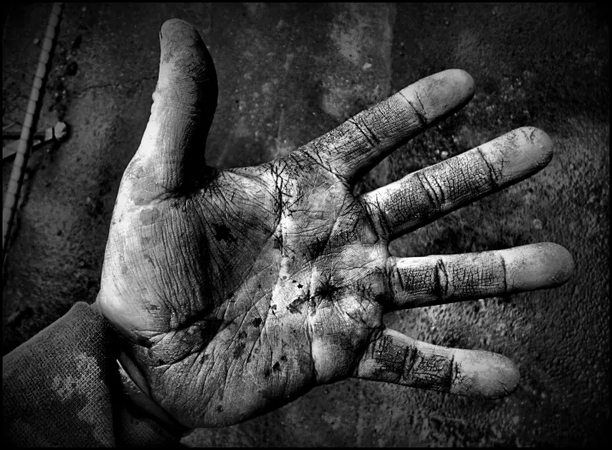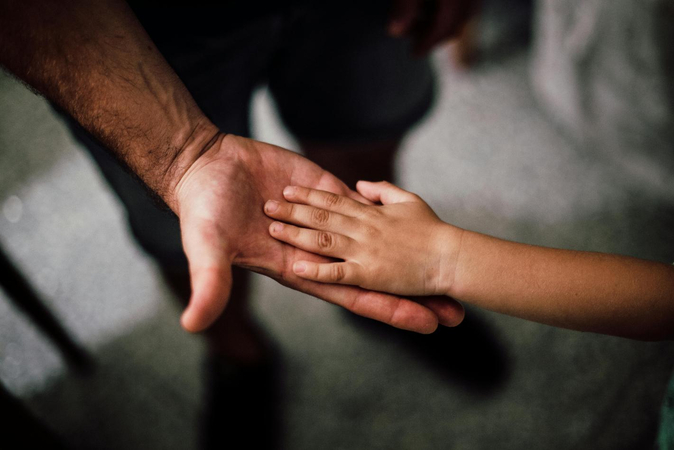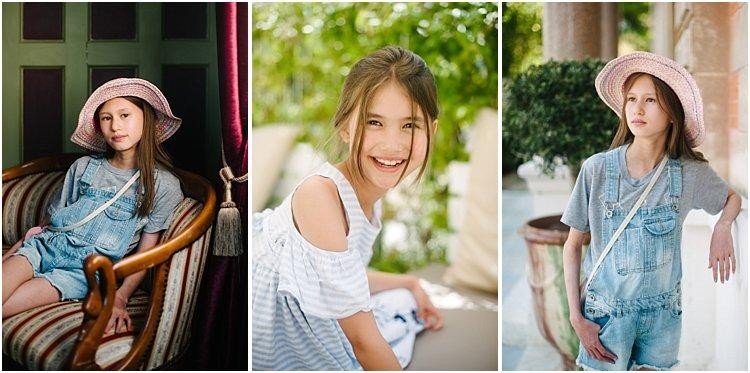Mastering Hand Photography: Creative Tips to Capture Emotion, Detail, and Depth
"You can tell a lot about a person by looking at their hands." My grandfather used to say that all the time. He was a carpenter-a man who worked not with machines or spreadsheets, but with his hands. I still remember sitting beside him, watching as his calloused fingers guided a chisel with more grace than I thought wood could ever deserve. Those hands taught me the value of stories-not the ones we tell with our mouths, but the silent ones we show through touch, gesture, and motion.
Have you ever looked at a photograph and felt like you could reach through the frame and hold someone's hand? That, my friend, is the magic of hand photography.
In a world filled with faces and scenery, hand photography is an unsung art. It's subtle. Emotional. Tactile. And often, overlooked.
But if you master it? Your images won't just be seen. They'll be felt.
In this deeply personal and professional guide, we're diving into the soul of hands-how to photograph them with intention, how to tell better stories, and how to create images that stick with people long after they scroll past. So, whether you're a beginner behind the lens or a seasoned photographer searching for deeper expression, this one's for you.

Part 1. The Hidden Language of Hands
Hands aren't just appendages; they're storytellers. They speak a language deeper than words, a silent poetry that unfolds through every wrinkle, crease, and motion. When you photograph hands, you're not just capturing flesh and bone-you're capturing emotion, history, and personality all rolled into one.
Think about it: a clenched fist can shout defiance or pain. A gentle touch can whisper comfort or longing. A trembling hand can plead silently, begging to be understood. Hands don't just hold objects-they hold stories, memories, and feelings that faces sometimes hide or can't express.
I remember one of my favorite shots from a trip to Prague-a street violinist pouring his soul into music. His left hand gripped the violin's neck, veins standing out like the strings he played. His right hand was a blur, a dance of sound and passion mid-motion. His face? Quiet. But his hands told everything-the struggle, the dedication, the artistry.
That's the magic of hand photography. It's raw, intimate, and deeply human. The hands invite viewers in, letting them fill the silence with their own stories and emotions. When you capture hands well, you're not just taking a picture-you're sparking a connection, creating a moment that speaks volumes without saying a single word.
Part 2. Why Hands Are So Damn Hard to Photograph
Photographing hands is not easy. Let's not sugarcoat it.
They can look awkward, claw-like, or distractingly large. The bones, the joints, the shadows-it's a balancing act. You've probably taken a portrait where the hands ruined the shot because they looked stiff or out of place.
But with practice, and the right techniques, the same hands can become a work of art. They can carry your entire composition.
Part 3. Find the Story Before the Shot
You know, great hand photos don't come from forcing a pose. They come from a story-something real that's happening or something you imagine.
Before you click, ask yourself: What's this hand doing? What's it been through? What's it feeling right now?
I remember once shooting a mom holding her newborn. Her fingers were so gentle, barely touching those tiny baby fingers. You could feel her awe and protectiveness without her saying a word. Then there was this farmer, wiping sweat from his brow, his hand rough and worn-each line telling a day of hard work.
When you start with that story in mind, the pose just happens naturally. You don't have to tell someone to "put their hand here" or "hold it like this." You just capture what's already there. That's where real magic lives.

Part 4. Light Like You're Painting
Natural light is your best friend. I like to think of light as emotion-harsh light creates tension, while soft light creates intimacy.
Early morning or golden hour gives the skin a warmth that speaks. If you want texture-wrinkles, veins, scars-side lighting will bring it all out.
Try this: hang a sheer white curtain over a window and photograph someone's hand resting on a table. Watch the light wrap around the skin. It's breathtaking.
Or go dramatic-try backlighting to turn a hand into a silhouette. It's less about detail and more about emotion.
Part 5. Posing That Feels Like Breathing
Forget stiff, mannequin-like poses.
Instead, guide your subject gently. Ask them to pick up an object, run their fingers along fabric, trace the edge of a book. Movement leads to natural form.
Here's what I say during shoots:
- "Shake out your hands."
- "Now let them rest."
- "Pick that up like it's important to you."
Fluidity is beauty. Think of dance. Think of grace. Think of presence.
Part 6. Use Composition to Speak Louder
Where you frame the hand says everything.
A tight close-up? Intimacy. A wider shot with hands working in context? Story.
Remember the rule of thirds. Give hands room to move visually. A hand reaching into a frame feels like action. A hand centered and still feels like contemplation.
Use negative space. Let the hands breathe. And never underestimate the power of an intentional crop.

Part 7. Zoom In to the Soul
If you want to really connect with your viewer, get close-like, really close. I'm talking about those tiny details most people overlook: a chipped nail, a worn wedding band, freckles sprinkled like stars, or paint stains that tell a story of creativity and mess.
One time, I asked a baker to run her fingers through flour and caught the soft dust settling on her skin. It wasn't just a pretty shot-it spoke of mornings in the kitchen, hard work, and passion. Another time, I captured water droplets sliding off a painter's fingertips-those little moments that feel alive and raw.
These details are where the soul lives. They're honest, unfiltered, and deeply human. When you zoom in and pay attention to these subtle textures and marks, your photos don't just show hands-they reveal lives.
Part 8. Let the Environment Tell Half the Story
Hands + context = emotional gravity.
A gardener's hand digging into soil. A writer's hand hovering above a journal. A child's hand gripping a teddy bear.
The environment doesn't distract-it deepens the moment.
Part 9. Embrace Black & White for Raw Emotion
Stripping away color forces focus. It highlights veins, skin texture, and shadows.
Black and white also feels timeless. Nostalgic.
One of my most popular photos? An old man's hand clutching a prayer book, rendered in high contrast black and white. No one needed to see his face. The image said everything.
Part 10. Angles That Speak Volumes
Try this:
- Shoot from below to make hands feel powerful.
- Shoot from above to feel introspective.
- Side profiles for storytelling.
Lie on the ground. Climb a chair. Do whatever it takes.
Once, I shot a ballerina's hand mid-arc, silhouetted against stage lights. I stood behind a curtain, barely breathing. The result? Pure magic.
Part 11. Use Props to Anchor, Not Distract
Props are like the supporting cast in a great movie-they help set the scene but never steal the spotlight. I always tell myself: keep it simple and meaningful.
Imagine a hand gently curling around a steaming cup of tea on a chilly morning. The steam isn't just hot air-it's warmth, comfort, a quiet moment captured in time. Or a hand holding a faded love letter, edges worn from years of folding and unfolding-a silent storyteller of memories.
Once, I worked with a model holding a cracked mirror. Instead of taking attention away, the mirror's fractures echoed the fragility in the gesture of her hand, adding layers to the story.
The trick? Don't pile on props like a cluttered shelf. One carefully chosen object can elevate the emotion without drowning the hands. Remember, the hands have the real story-everything else is just there to help you hear it better.
Part 12. In Portraits, Let Hands Become Characters
Portrait photography without hands often feels incomplete.
Encourage your subject to interact:
- Hands gently touching the face
- Fingers gripping a collar
- One hand resting on another
These small choices can elevate a portrait from decent to unforgettable.
Part 13. My Top Posing Tips (Steal These!)
- Relax the fingers (no tension!)
- Keep a slight bend
- Let the thumb naturally oppose the fingers
- Use layers-hands interacting with fabric, skin, hair
- Watch for symmetry vs. asymmetry. Both have emotional weight
Part 14. Practice. Then Practice Again.
Here's something I've never told anyone:
When I first started, I photographed my own hands-every day-for 30 days. I used mirrors, timers, and cheap desk lamps. I watched how light changed my knuckles, how angles changed the narrative.
Do this.
Study your own hands like they belong to someone you love. You'll learn faster than any tutorial can teach you.
Part 15. Movement = Emotion
Motion adds tension. Intention. Direction.
Let your shutter speed slow down to capture motion blur. Try burst mode during natural activity-typing, flipping pages, painting.
Emotion lives in the in-between moments.
Part 16. Real Stories Through Hands
A photo I'll never forget: a bride and her father holding hands behind a door just moments before the ceremony. They didn't see each other. But their hands said everything.
Photograph the untold moments.
Part 17. Break the Rules (Seriously)
Once you know how to light and pose-forget everything.
Shoot in dim lighting. Crop awkwardly. Let your photo blur. Lean into imperfection.
One of my favorite images was a mistake: I accidentally underexposed a hand resting on a foggy window. But it looked like a memory, like something fading. I kept it.
Part 18. Post-Processing: Edit With Purpose
Editing isn't just about filters or fancy effects-it's where your photo either finds its voice or loses it. I like to think of post-processing like seasoning a dish: just enough to bring out the flavors, but never so much that it overwhelms the main ingredient.
For hand photography, contrast is your secret weapon. Crank it up a bit to bring out the skin's texture-the lines, the wrinkles, the tiny scars that tell a story. But be careful: too much, and you risk making the skin look harsh or unnatural.
Colors? They speak volumes. Warm tones can wrap your image in a cozy hug, making the viewer feel comfort and connection. Cool tones, on the other hand, can create a sense of distance, mystery, or calm-like the hands belong to a story just out of reach.
Sometimes, dialing back clarity softens the photo just enough to invite touch, like you want to reach out and feel the skin. And adding a little grain? That's the magic dust-it brings mood, texture, a hint of nostalgia.
But here's the golden rule: don't go overboard. I see so many shots where the editing screams louder than the subject. Let your hands breathe. Let the story shine through. Editing should enhance the truth, not cover it up.
Part 19. Look Around You: Inspiration is Everywhere
The world is full of hands. Working. Loving. Creating.
Photograph your own. Photograph strangers (with permission). Photograph life.
Some of my best shots came from being bored and curious. Sitting in coffee shops. Riding the subway. Watching people.
Look down. There's a story waiting in every palm.
Part 20. The Final Frame: Make Them Feel Something
The best compliment I've ever received on a hand photo?
"Looking at this made me miss my mother."
That's when I knew I was doing something right.
If you want to take stunning photos of hands, forget about perfection. Aim for truth. Look for gestures that remind people of themselves, or someone they once knew. Make them pause. Make them feel.
That's what photography is really about.
So, the next time you lift your camera-don't just take a picture.
Tell a story.
With hands.
Part 21. Elevate Your Photos with HitPaw FotorPea

Once you've captured those expressive hands and told their story, polishing your photos to perfection can really make your work stand out. That's where HitPaw FotorPea comes in - a powerful AI-driven photo enhancer designed to boost your images effortlessly.
Here's what makes HitPaw FotorPea a game changer for photographers like you:
- Automatic Ultra Quality Enhancement
- AI Upscale to 4K/8K
- Photo Restoration
- Batch Processing
- Specialized Face Retouching
- AI Background Tools
- Creative AI Features
Instantly sharpen blurry photos and remove noise without any loss of detail.
Enlarge images while preserving crisp quality - perfect for printing or large displays.
Restore old or damaged photos and even add color to black-and-white shots with one click.
Save time by enhancing multiple photos at once.
Remove blemishes and wrinkles in portraits while keeping a natural look.
Remove or replace backgrounds seamlessly, letting your subject truly shine.
Generate stunning artwork or transform selfies with artistic portrait generators.
HitPaw FotorPea helps your photos tell their story as clearly as your lens captures it. When your vision meets this kind of technology, the results are truly next-level.








 HitPaw Univd (Video Converter)
HitPaw Univd (Video Converter) HitPaw VoicePea
HitPaw VoicePea  HitPaw VikPea (Video Enhancer)
HitPaw VikPea (Video Enhancer)



Share this article:
Select the product rating:
Daniel Walker
Editor-in-Chief
This post was written by Editor Daniel Walker whose passion lies in bridging the gap between cutting-edge technology and everyday creativity. The content he created inspires the audience to embrace digital tools confidently.
View all ArticlesLeave a Comment
Create your review for HitPaw articles